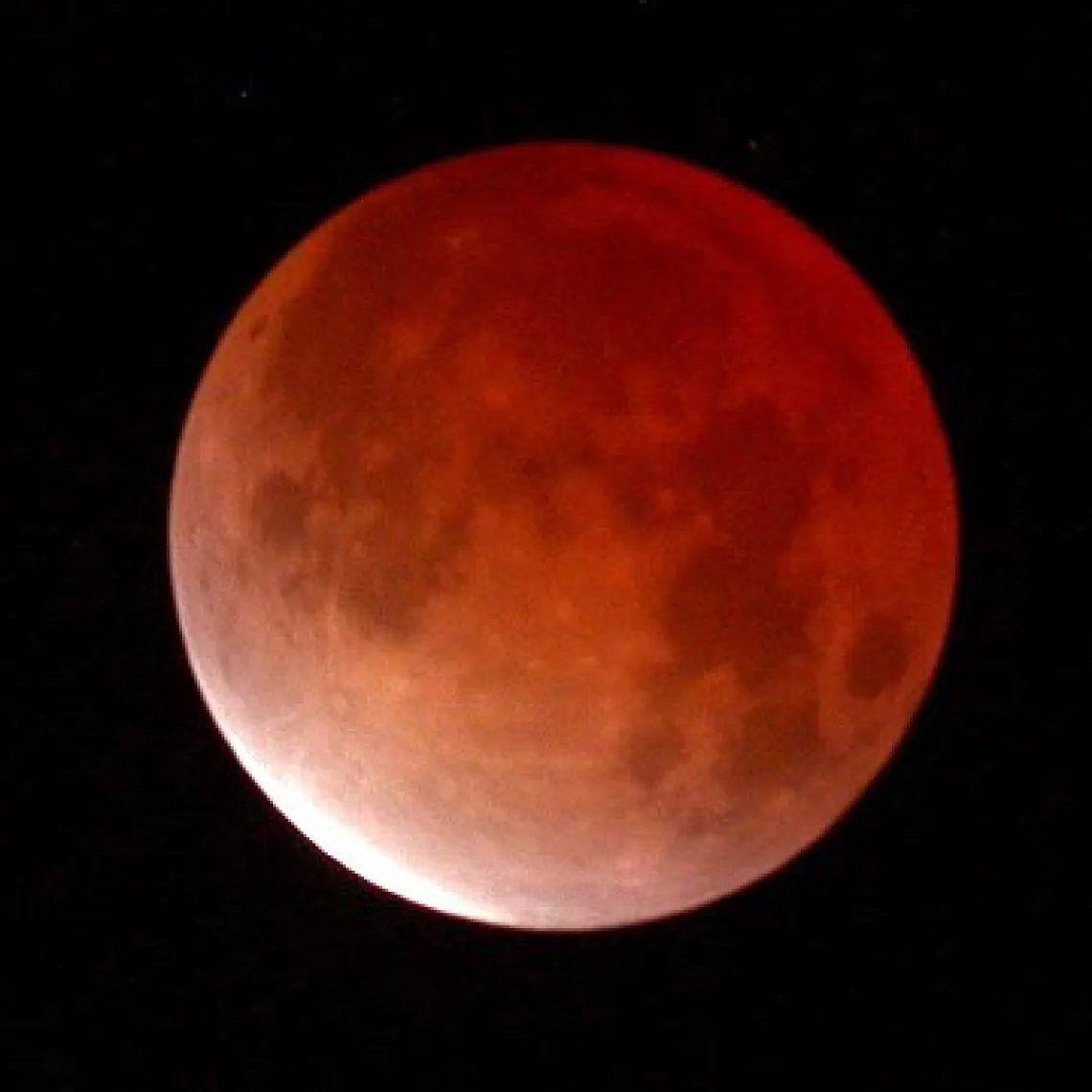
(Source: Wikimedia Commons/Frederik Vandaele)
This month we are treated with a great view of a total lunar eclipse. Not only will the Moon completely enter Earth's umbra, but at maximum eclipse, the Moon will actually touch the very center of Earth's umbra, making it what's called a central eclipse.
The eclipse will begin in the early morning of Tuesday, November 8, and finish up right around sunrise. Here are the exact timings:
Penumbral eclipse begins at 1:02 AM
Umbral eclipse begins at 2:09 AM
Total eclipse begins at 3:16 AM
Maximum eclipse occurs at 3:59 AM
Total eclipse ends at 4:41 AM
Umbral eclipse ends at 5:49 AM
(Sunrise at 6:47 AM)
Penumbral eclipse ends at 6:56 AM
(Moonset at 6:58 AM)
The beginning and end of the penumbral portion of the eclipse will be barely noticeable, but as it gets closer to the umbral portion, you will easily notice the Moon looking dimmer than usual. Then during the umbral portion, you will see a definite "bite" out of the Moon as the Earth blocks the sunlight completely from part of the Moon's surface. Finally, during the total portion, the Moon will be much darker than usual and even hard to notice in the sky if you're not looking for it.
With all of the direct sunlight being blocked from the Moon, you should be able to notice the "blood Moon" effect. A reddish color appears due to the indirect sunlight refracting through Earth's atmosphere. This refraction is what gives us red skies before sunrise and after sunset.
The photo included here is from a similar eclipse that happened in 2004 to give you an idea of what you might see this time near maximum eclipse.
Science Snacks – Space Bites – All About Lunar Eclipses
Discover how and why Lunar Eclipses occur!
Note: This video references the penumbral eclipse of November 2020.

